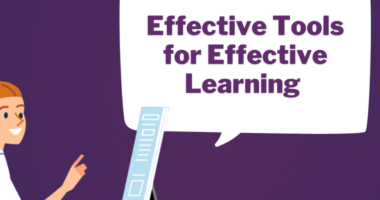A lot of small business owners have no idea how to build links to their website, or how to find low competition links to improve SEO. They often come to me for help, and I’ve been able to provide links for many clients. I’ve learned a lot of strategies from other online marketers, and I’ve created my own link building methods. If you want to get links for your site, this blog post is for you.
If you are a busy marketer, then you know link building isn’t easy. It’s not something you can just do once and then forget about. It’s something that you have to consistently do on a regular basis. Link building is a critical facet of your online marketing plan, and you need a system to keep it fresh and on track.
In the past, the emphasis in link building was more on quantity than quality.
Today? Making links is a whole other story.
When developing a link building strategy, it is important to know that it will not work immediately. It’s a gradual process – at least if you do it right.
The pages you link to, and the quality and authority of those pages, play an important role in your ranking in search engine results.
That’s where blogs come to the rescue. With regular blogs, you get 434% more indexed pages and your inbound links increase by 97%.
However, besides blogging, there are other proven methods to build better links and improve your SERP ranking.
This blog post will show you 13 seamless link building strategies that you can start using today. They are especially useful for marketers who have a lot on their plate and want to keep track of their search engine rankings.
Why is link building so important?
Link building is important for search engine optimization (SEO). This is one of the main factors used by search engines to determine ranking, i.e. who is on the first page of search results.
To determine your site’s ranking, Google, Bing, Yahoo and other search engines look at the number of links to your site (and the quality of those links).
The more quality, reliable and reputable sites link to you, the more your blog posts and sales pages will appear in the search engine results pages.
In addition, links to your website help users find your site and can increase traffic and trust. After all, users are more likely to trust you if other sites think you know what you’re talking about.
13 Link Building Strategies for Marketers
So how do you get quality links from other websites? According to my link building strategies.
These are the strategies I’ve used over the past decade to found Neil Patel Digital and become an authority on digital marketing.
Experiment and find the strategy or strategies that work best for you and your business.
1. Using strategic guest blogging
Is guest blogging dead? Yes and no.
The old method of mass guest blogging just to get links is dead. You don’t want to publish an article on a website that has nothing to do with your niche and has no authority whatsoever, just to get a backlink.
This kind of guest blogging is not appropriate. Search engines are smart and can detect that you are not adding value as a guest blogger.
If you want to profit from guest blogging, you need to be strategic and authentic. Make sure you are creating unique content for another site (such as a case study) and that it is relevant, authoritative and appealing to your audience.
When you blog selectively, you get higher rankings, more traffic, and qualified leads.
2. Creation and dissemination of computer graphics
Infographics still work today and can play an important role in your link building strategy.
Infographics are great because you constantly generate organic traffic to your blog and get quality links without asking for them.
I’ve found that articles with infographics get 178% more links. This makes creating infographics a link building tactic you can’t ignore.
If you’re ready to create and promote your infographic, check out the links below:
3. Being active in social media
Social media has revolutionized marketing and can be a great help to your link building plan and article publishing efforts. If you’re not active on social media, you’re doing your brand a disservice.
Be active by sharing new posts, photos and updates. Help your fans find what they want to see by sharing it in multiple places across social media.
If you are active on social media, you can easily increase engagement even if you are new to it. This way, you open up your brand and website to more people who can share your best messages with their target audience.
This will improve your link profile and increase your overall visibility.
See also:
4. Use links to sources from reputable websites
It’s time to use resource links from trusted sites. A tool is like a guidebook that you create or write for your target audience.
Some reputable sites and blogs like Forbes, Entrepreneur, Huffington Post, Jeff Bullas, Social Media Examiner and Copyblogger have resource pages that you can use to create your own page.
If a leading website in your niche has compiled a list of blogs in your area, it will be easier for their visitors to find what they are looking for.
Here’s an example from Copyblogger.
If you can create an even bigger article about the source than the one above, you will get more backlinks. You can expand yours to 25, 50 or more.
Here are some ideas for original titles that you can use as examples for your source:
- 25 blogs about copywriting that will make you more money
- 50 blogs about copywriting you didn’t know existed
- 27 blogs on copywriting and content marketing that will send you free traffic
Such a resource can be a great tool for a marketing team. After writing your article, you will receive the links by email. Send a simple email to everyone whose blogs you have added to the list.
I once sent emails to 30 bloggers that I quoted in my article about sources. Twelve of them linked to my resource page within ten days, and I got a lot of social love.
Contacting them via email usually works better than the typical email asking for a broken link or referral because you contacted them first.
You have created a level of trust and also shown your appreciation. They will be more inclined to post a link to your website.
5. Using a broken link strategy
A dead link strategy can be the best solution if you are too busy to write content for your blog or guest posts.
As a busy marketer, I know you don’t have much time to write content. This is one of the reasons why many B2C content marketers struggle with creating engaging content for their customers.
How does the broken link structure work?
This link building strategy is simple: Find blog pages with broken links (links that no longer work) and offer to replace the broken link with a link to similar content on your own site.
If I link to a particular web page on Neil Patel’s blog and find that the links don’t work, I can easily replace it with another relevant and extremely valuable resource. If this site is of high quality, it is both juice for search engine optimization and a valuable link.
There are several detailed guides to help you understand the concept of link building not working and how to do it right the first time. You will find these resources very useful:
6. Developing your personal brand
One of the most important link building strategies is to build your brand. Your brand develops from your thoughts and then begins to express itself outwardly.
When it comes to building links that work, know that people will naturally link to you as your personal brand grows.
What do you mean? Let’s take a little break.
Although there are different definitions in the marketing world, a natural link is one that a) was obtained through an editorial and b) is organic to the context in which it appears.
This is not part of the sponsorship and is not compensated in any way. A natural link often makes credibility, and this is something every professional blogger should strive for.
I have seen how powerful a natural connection can be. Whenever I publish a new blog post, I usually see new links from blogs with authority within 24 hours.
The ability to make money depends on the quality of your content and your brand. In a sense, your brand represents you. My definition of a brand is your publicist when you’re not there.
I’ve been doing online marketing for over a decade. During this time, one of the most effective strategies I used to build my personal brand was to blog constantly. If you blog regularly, you’ll get more attention.
If link building is part of your strategy, you need to get serious about blogging. You will get 97% more inbound links, which will also improve your search engine rankings.
7. Check competitor backlinks
If your competitors rank higher than you in the search engines, they may be on the right track. You can be there too.
There is nothing more effective than spying on your competitors to find out where their links are coming from.
By spying on your competitors, you can see what keywords they are ranking for, where their best links are coming from, and what they are currently doing that is helping them be successful: this is called competitive analysis.
So how do you check your competitors’ backlinks?
Perform the following steps:
- Step one: Go to the Ubersuggest website and enter your competitor’s domain in the search bar.
- Step two: On the results page, click on the Backlinks field.
- Step three: Scroll down to see a list of websites that link to your competitor.
If you know which sites your competitors are generating backlinks from, you’ve already won half the battle – you can now focus on the sites that are getting results instead of reinventing the wheel.
8. Copy left of top competitors
Now that you know where your competitors are getting their links from, you need to answer the next question: How can you replicate their success?
For example, if you find several links from related blogs, especially in the author’s profile, then it’s clear that guest blogging is working for him.
If their links are coming from company sites, your competitors are probably getting links through outreach and networking.
On the other hand, if their links come from highly profitable sites like Entrepreneur, Forbes, CNN, Huffington Post and others, you should be aware that a columnist or editor is likely involved and it could be a paid article.
Use Ubersuggest to target links with high domain and page authority. You need natural links from sites that Google (and the rest of your industry) already considers thought leaders.
9. Creating a chain of links
If you want to get the links you need, you have to give first. Don’t be selfish by only linking to your internal pages. Learn how to link to other useful blog posts.
Link roundtables are a powerful link building method and a great link building strategy. Just make a list of posts from other bloggers’ blogs.
How do I create circular reference reports?
First, find blog posts that are relevant to your topic. If you z. B. you want to compile a list of 50 blogs on writing headlines, go to Google and try this search box:
title: roundup YOUR KEYWORD
You should also pay attention to your current traffic and link profile. Other blogs in your industry can link to your articles. When writing reviews, start with the blogs that sent you traffic.
Remember that when you write an overview article, you shouldn’t just link to your internal pages. Website owners may not want to link to you because you don’t reciprocate.
If you link to their articles, they are more likely to do the same by linking to your source page.
10. Follow your backlinks
Most people spend time and money to get new links, but don’t keep track of their status.
If you’re not tracking your backlinks, how will you know if you need to build more or take a break? Right now you may have over 800 links pointing to your web pages, but if you check them after 30-60 days, some may be gone.
Why?
You can’t control the blogs and websites that link to you. Site owners can easily remove your link from their article or source page without telling you.
That’s why it’s so important to keep an eye on your backlinks.
If you’re not sure how many backlinks your website currently has, you can find out here.
- Step one: Go to the Ubersuggest website, enter the URL of your website and click Search.
- Step two: Click on the field Backlinks.
- Step three: Scroll down the page and you’ll see a graph of links won and lost.
The backlink tool shows not only who is linking to you, but also the anchor text of each page, the DA and the authority of the page.
There is also a graph that shows your backlinks over time. It’s helpful to see if your link building strategies are working or if it’s time to try something new.
11. Define column content
If you want people to take your content seriously, you need to write things that make them think. Create useful content, content that actually helps them do something, and the links will follow you.
Content is the lifeblood of your online business. Whether you sell information products, like ebooks or software, or physical products, like digital cameras or paper books, you need to give people a reason to promote you.
The challenge of creating content is frequency.
How often should you publish new content for your target audience?
There’s no point in constantly bombarding them with blog posts, because that usually leads to information overload.
The real question is when and how often you should publish new content for your potential customers and buyers. Some clients don’t mind if you post every day, but for others it seems like an impossible task.
This gives you two options:
- Ask your customers questions
- Occasionally create columnar content
If you follow the first option, you can get different responses from your email subscribers, your blog readers, your prospects and your customers. It gets complicated at the end.
The second option is much better. Instead of creating and publishing new content on a regular basis, save yourself the trouble of creating basic content on a regular basis.
What is the content of the columns?
According to Jaro Starak:
A post article is usually a textbook article that aims to teach your audience something. They are usually over 500 words long and contain many very practical tips or recommendations….. This kind of article has long-term appeal, stays relevant (it doesn’t depend on current events or time) and offers real value and insight.
Once you start creating core content, you won’t have to write and publish new articles every day of the week, and your traffic will increase.
Instead, you will attract traffic from users and other sites interested in the valuable content you have created.
If you want to increase your conversion rate, generate organic traffic and referrals, and improve your search engine rankings, you need to spend more time creating your core content. This is a great way to improve your link profile.
You can design the content column in a how-to style, as in this example by Jaro Starak :
You can also turn your post into a top list like this one from Wordtracker.com:
12. Reconnection through social listings
Link recovery is a popular topic in the world of search engine optimization and social media. You can fix broken 404 links and links to names that don’t point to your blog.
In Google Analytics, look at the 404 pages that visitors go to, and then redirect them to another active and relevant page while you fix the 404 pages.
Otherwise, you can just fix your broken page to get your links back.
However, we are particularly concerned about link recovery through social mentions.
If you are tracking your brand and social media mentions with Google Alerts and not leveraging those mentions, you are committing a mistake.
When you post an infographic with an attribution code under the graphic, your goal is to get people to add that code to their blog and link to you.
How many of these people use your code or link to the original source?
I develop and promote many useful infographics. Many websites may choose to publish my infographics for their readers.
They have to give up my blog, but what if they save the image and just upload it to their blog? How can I get back what is rightfully mine, the link?
Follow the simple steps below:
- Step one: Use a Google image search. Do a keyword search for the full title of your infographic.
- Step two: Click on your infographic and visit the site. Check whether your link is correctly assigned or not.
You can see that Tomer Harel has linked to my infographic page on QuickSprout.
In addition to infographics, you can also look at who is mentioning your blog URL. You can request a link if you feel your name or URL is listed but not associated with your website.
13. Earn editorial links
Editorial citations are not random. You create it by creating value. This is what Google has been advocating since the first Google Panda, Penguin, Hummingbird, and Mobile-geddon updates.
Editorial links are the most valuable and sought after links because they are provided for free by sites that expect nothing in return.
The nature of the editorial links is as follows: Your content needs to be engaging for people to link to it.
If all your links are acquired or created manually, you’ll have a hard time keeping them all, and Google may penalize you for not always being as careful. To avoid wasting time and effort, focus on producing good content.
Yes, I know I’ve said it over 50 times in the last 30 days, but if it wasn’t important, I’d ignore it. I create great content every day and thousands of people link to it. My link profile thanks me for this.
To get editorial links, you can start blogging with a strategy. Write material that helps people get from point A to point B. Create more training materials and materials on key areas and make sure all your materials have accurate data.
Read this guide on how to create better content that gets you editorial links.
Connecting issues
Is link building dead?
No. From now on, the focus is not on the number of backlinks, but on their quality.
What is a link building strategy?
Practice getting backlinks to your website to increase authority and search engine ranking. Common link building strategies include creating infographics and guest posts.
Do I need permission to link to another site?
No, you do not need permission to link to another site.
What is the most common link building strategy?
Guest blogging is one of the most popular link building strategies. It’s about creating quality content that people want to link to.
What is the best way to determine the authority of a website that gives you a backlink?
Use a tool like Ubersuggest to find out the domain authority of websites you get backlinks from.
Link Building Strategies Conclusion
The link profile of your website is one of the most important ranking factors in search engine results. Remember, Google cares less about the number of links to your pages and more about the experience you create for users.
Be smart and strategic with blogging, social media marketing, search engine optimization and any other marketing techniques you use to create leads.
Your real goal is not to create links, but to get quality, reliable and natural links. Because from now on it’s not the number of links that counts, but their quality.
Follow these no-frills link building strategies and you’ll be well on your way to creating a successful blog that users and Google will love.
Which of these best link building techniques have you used?
- SEO – Unlocks a large amount of SEO traffic. To see real results.
- Content marketing – our team creates epic content that gets shared, attracting links and traffic.
- Paid media – effective paid strategies with a clear return on investment.
Frequently Asked Questions
What are some examples of link building strategies?
Some examples of link building strategies are: -Guest blogging on relevant websites. -Creating a blog and linking to your website in the footer. -Creating a blog and linking to your website in the sidebar. -Creating a blog and linking to your website in the header. -Creating a blog and linking to your website in the title. -Creating a blog and linking to your website in the first paragraph of each post. -Creating a blog and linking to your website at the end of each post. -Creating a blog and linking to your website in the first paragraph of each post. -Creating a blog and linking to your website at the end of each post. -Creating a blog and linking to your website in the title. -Creating a blog and linking to your website in the first paragraph of each post. -Creating a blog and linking to your website at the end of each post. -Creating a blog and linking to your website in the title. -Creating a blog and linking to your website in the first paragraph of each post. -Creating a blog and linking to your website at the end of each post. -Creating a blog and linking to your website in the title. -Creating a blog and linking to your website in the first paragraph of each post. -Creating a blog and linking to your website at the end of each post. -Creating a blog and linking to your website in the title. -Creating a blog and linking to your website in the first paragraph of each post. -Creating a blog and linking to your website at the end of each post.
What are link building strategies?
Link building strategies are the methods that you use to build links to your website.
What is a linking strategy?
A linking strategy is a way of connecting two or more ideas together.
Related Tags:
link building strategies 2023link building strategies listcreative link building strategieslink building strategies 2023link building strategy templatewhat is link building strategy,People also search for,Feedback,Privacy settings,How Search works,link building strategies for new websites,link building strategies 2023,link building strategies list,creative link building strategies,link building strategies 2023,link building strategy template,what is link building strategy,link building services



